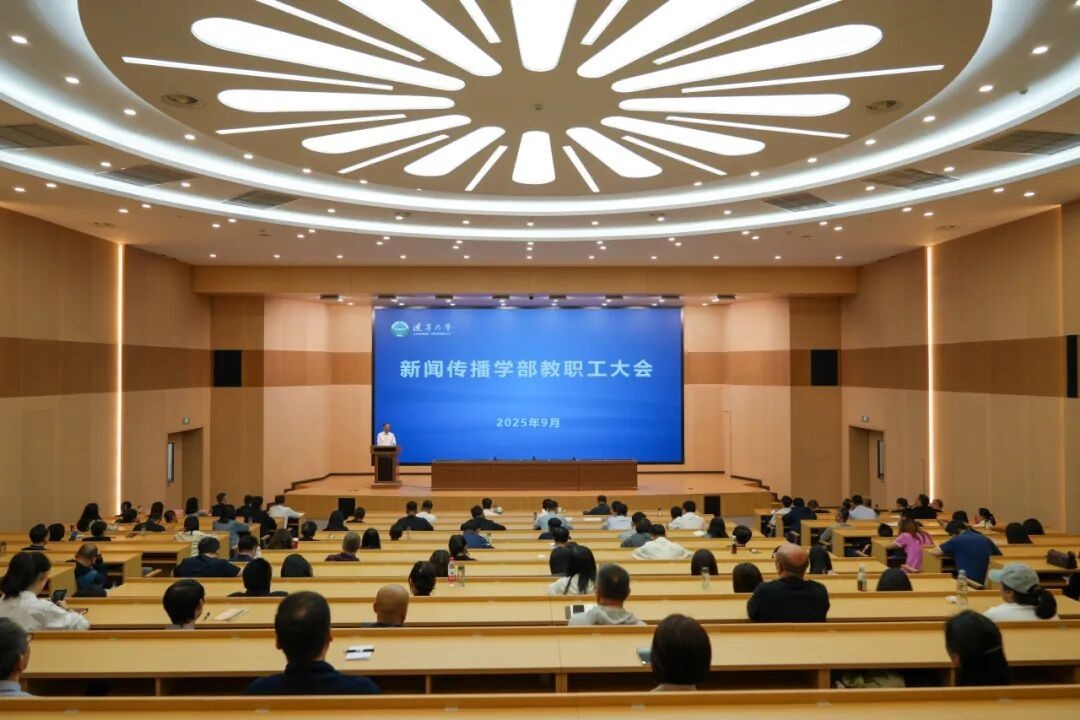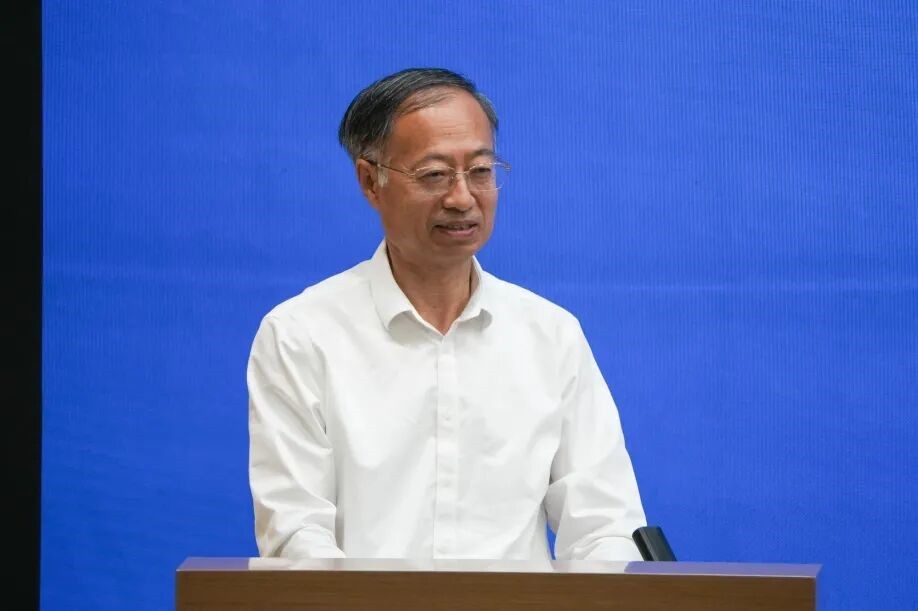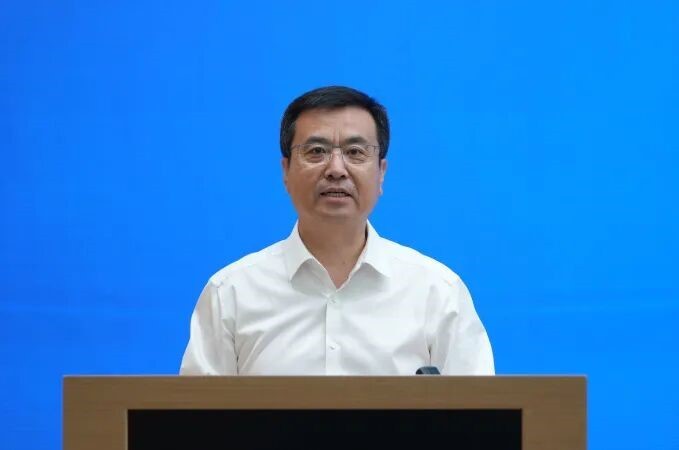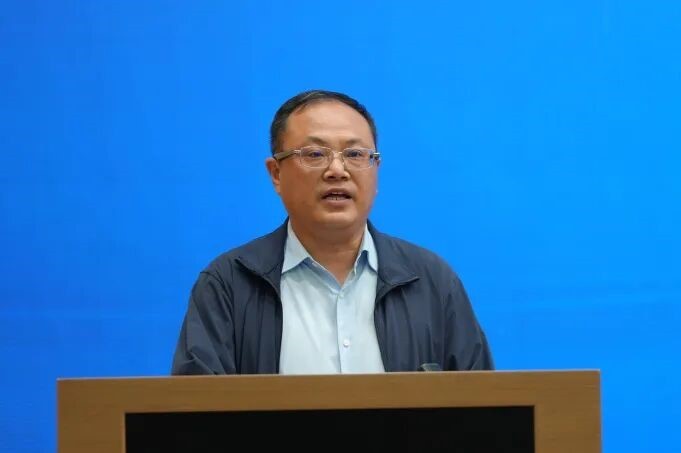
On September 23, 2025, Liaoning University (LNU) convened a faculty meeting for the Division of Journalism and Communication. Pan Yishan, Secretary of LNU CPC Committee, attended the meeting and delivered a speech. Zhang Hongxin, Deputy Secretary of LNU CPC Committee, presided over the session. Yan Hai, Vice President of LNU, read out the “Decision on the Establishment of the Division of Journalism and Communication at Liaoning University”.

In his address, Pan Yishan emphasized that the establishment of the Division of Journalism and Communication is a significant initiative by the university to proactively integrate disciplinary resources, optimize academic structures, and promote institutional reforms amid profound transformations in information technology and the deepening integration of media. This move marks a new step in the university’s “Double First-Class” initiative and its strategy to serve the province’s cultural strengthening efforts.
Pan Yishan articulated a framework of five core principles for the Division’s development: unity in vision, synergy in action, coordination in pace, integration in outcomes, and a win-win ecosystem. He called for aligning with national strategies and provincial needs, enhancing political awareness, and embracing the critical missions of information dissemination, guiding public opinion, and preserving cultural heritage. This entails maintaining a clear stance in implementing General Secretary Xi Jinping’s important directives on journalism and public opinion work, and cultivating a talent pool that is politically firm, professionally proficient, and ethically sound. It also means taking concrete responsibility by translating unprecedented support from partner units into momentum for high-quality development, and achieving tangible outcomes through the strategic integration of the School of Journalism and Communication, the College of Communication, and the School of Art—a move designed to foster internal renewal and external impact, strengthening the university’s voice in both national strategies and regional development.
He further stressed the importance of leveraging the collaborative advantages between the university and the provincial authorities to realize the strategic objectives set by the Publicity Department of the Provincial Party Committee. The Division is expected to drive innovation in goal-setting, standard alignment, teaching and research, and environmental upgrades. Faculty are encouraged to engage directly with industries to address real-world problems, closely integrating research and teaching to deliver outcomes that meet sectoral needs.
Keeping pace with trends in journalism and communication, adhering to requirements from the Publicity Department of the Provincial Party Committee, and synchronizing with the university Party Committee’s work arrangements are essential. The Division must deepen integration with the industry, rigorously implement directives from the Publicity Department and member units, establish regular communication mechanisms, and ensure effective response to needs. It should also align closely with the university’s overall work plans, break down tasks into specific target objectives, and facilitate resource sharing and collaborative implementation.
Comprehensive efforts should be directed toward the “Ten Hundred Project” with all functional departments of the university collaborating in areas such as Party building, disciplinary development, teaching reform initiatives, talent cultivation, research platform development, social services, employment guidance, and logistical support to reinforce the Division’s growth.
Finally, he highlighted the need to harness the strengths of university-department collaboration, alliance bridging, and internal coordination. Deeper cooperation with units like the Liaoning Provincial Party Committee Office of the Cyberspace Affairs Commission, Liaoning Radio and Television Group, and Liaoning Publishing Group will expand pathways for industry-academia-research synergy. Through the Liaoning Marxism Journalism Education Alliance, interdisciplinary integration can be advanced. Internal coordination mechanisms should be refined, special task forces fully utilized, and both internal and external resources integrated to support the Division’s efficient and routine operation.
Pan Yishan underlined that the establishment of the Division affects not only the three schools but also the overall trajectory of the university’s “Double First-Class” initiative. All units must unite in purpose, share resources, and collaborate effectively—forging consensus through unity, pioneering new horizons through synergy, advancing in coordinated steps, achieving breakthroughs through integrated efforts, and building a vibrant ecosystem through win-win cooperation—to establish a new platform for resource aggregation, innovation, and outcome generation. This will substantially contribute to the university’s “Double First-Class” development and the broader strategy of cultural strengthening in the province.


At the meeting, Cheng Lihong, Dean of the School of Journalism and Communication, Tian Yan, Party Secretary of the College of Communication, and An Lin, Dean of the School of Art, each delivered statements expressing their full support for the university Party Committee’s decisions and their commitment to actively engaging in the development of the Division.
The meeting was attended by heads of relevant functional departments of the university, members of the leadership teams from the units forming the Division of Journalism and Communication, and all faculty staff.